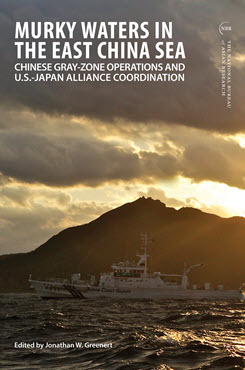NBR Special Report no. 90
Options for Japan-U.S. Cooperation in Coping with Gray-Zone Operations over the Senkaku Islands
This essay examines China’s operations around the Senkaku Islands as an example of a gray-zone situation, explores tools of Japan-U.S. cooperation to effectively respond to such a situation, and suggests ways to improve these tools.
EXECUTIVE SUMMARY
MAIN ARGUMENT
For stabilization of the Indo-Pacific, cooperation among countries in the East Asia region, based on the Japan-U.S. alliance, is becoming more important. Additionally, the dispute over the Senkaku Islands in the East China Sea poses an inherent danger that, if handled incorrectly, could force a change to the alliance—the keystone of stability in the region. The U.S. commitment to defend the Senkaku Islands in the event of an armed attack is crucial for deterring aggression. However, China’s increasingly sophisticated gray-zone capabilities will require Japan and the U.S. to further improve their crisis-response capabilities not only in the conventional domains of land, sea, and air but also in the new domains of cyber and space, among others. China is likely to try to employ various gray-zone strategies in a calculated way to dissuade Japan and the U.S. from invoking Article 5 of the Japan-U.S. Security Treaty. The key issue is how the allies can deal effectively with these gray-zone maneuvers.
POLICY IMPLICATIONS
- Against China’s increasingly sophisticated gray-zone capabilities, it is important to further enhance Japan-U.S. joint response capabilities across all domains.
- The key issue is how Japan and the U.S. should respond to China’s use of nonconventional gray-zone capabilities to sway the U.S. from defending Japan.
- Further studies should be conducted to identify ways to concretely improve and strengthen the existing Japan-U.S. alliance coordination mechanism.
Takashi Saito is Chairman of the Maritime Security Study Group at the Nakasone Peace Research Institute (NPI), a retired admiral, and the former chief of staff of the Japan Joint Staff.
Susumu Nakamura is Visiting Senior Fellow at the Keio University Global Research Institute and a retired rear admiral.
Hidetoshi Hirata is a retired lieutenant general and former commander of Air Training Command in the Japan Air Self-Defense Force.
Hideshi Tokuchi is a Senior Research Adviser for NPI.
Goro Matsumura is a retired lieutenant general and former commander of the North Eastern Army in the Japan Ground Self-Defense Force.
Koichi Sato is a Professor at J.F. Oberlin University.
NOTE: This essay is the view of the Maritime Security Study Group and does not necessarily represent the view of NPI.



